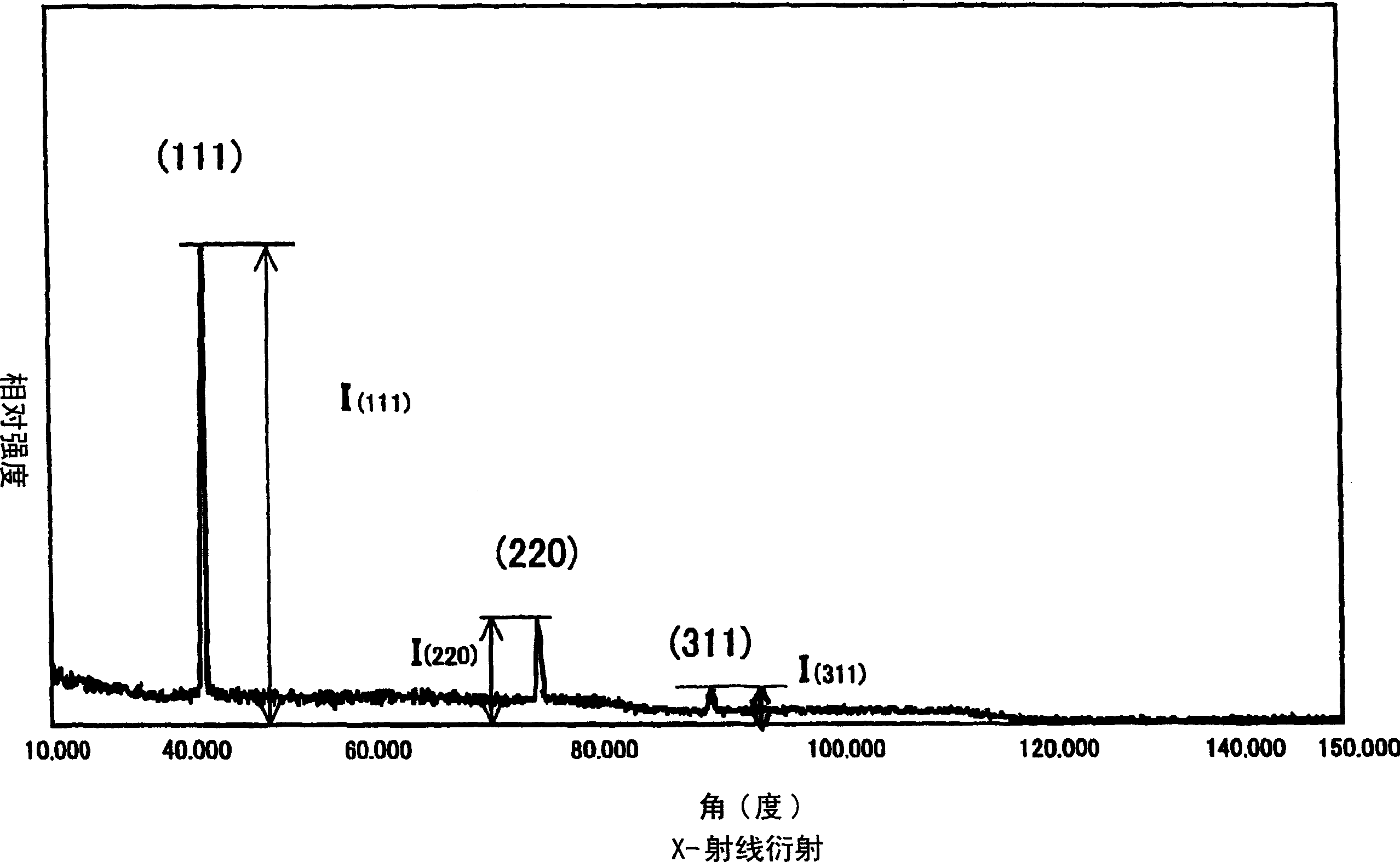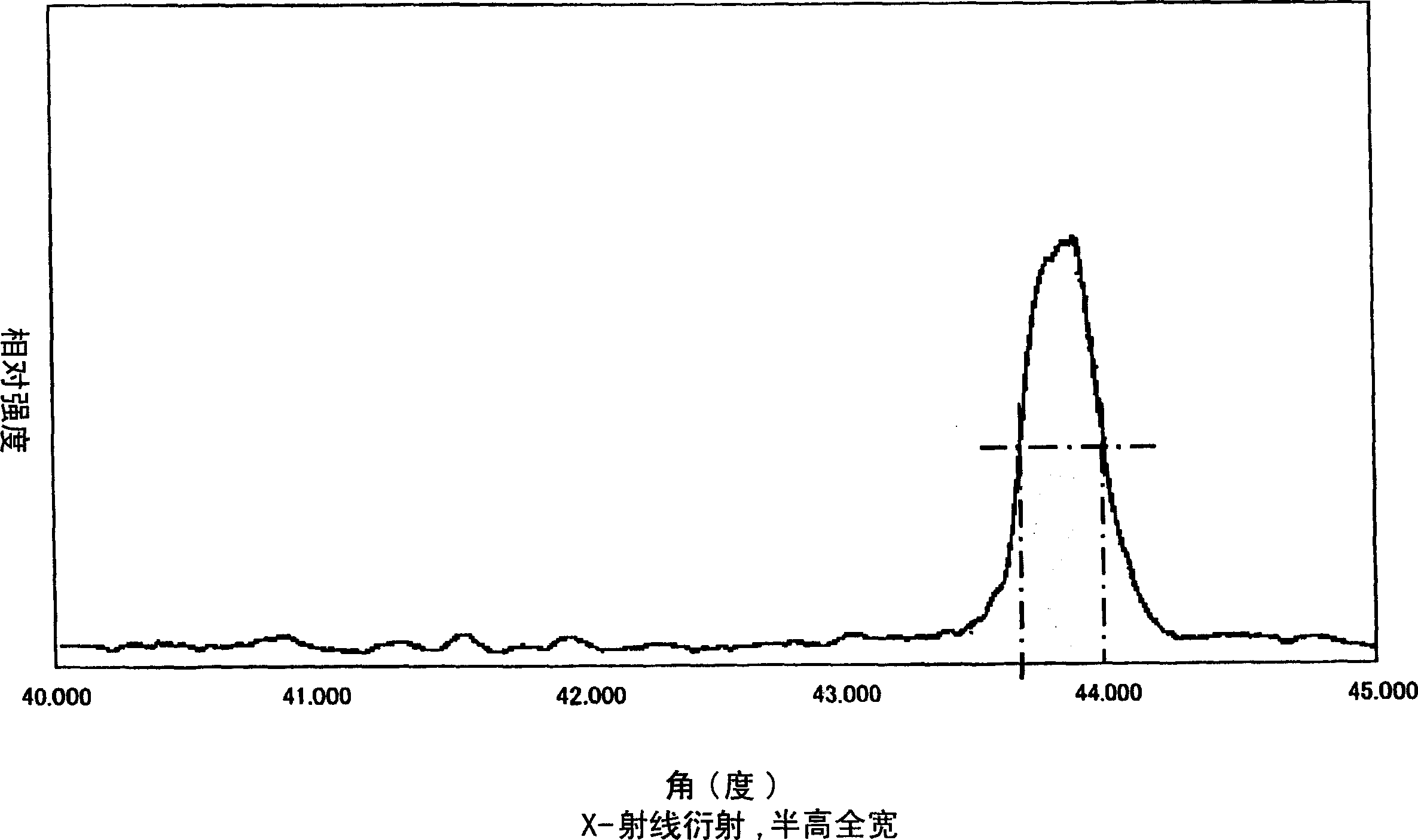Diamond-coated electrode and method for producing same
A diamond coating technology, applied in the direction of electrodes, electrolysis process, electrolysis components, etc., can solve the problems of small potential window, hindering the inherent characteristics of diamond, affecting the quality of diamond film, etc.
- Summary
- Abstract
- Description
- Claims
- Application Information
AI Technical Summary
Problems solved by technology
Method used
Image
Examples
Embodiment 1
[0073] A substrate of the size and material shown in Table 1 was used as a substrate, and its surface was scraped with diamond powder and then cleaned. Each of these substrates was placed in the synthesis apparatus shown in Table 1, and as figure 1 The synthesis of conductive diamond 1 on a substrate 2 is shown.
[0074] As shown in Table 1-1, the gas pressure of 2.7kPa or 7kPa, the hydrogen flow rate of 5000sccm, and the methane (CH 4 ) flow rate. Triethyl borate (B(OC 2 o 5 ) 3 ) as a boron source. Argon gas was bubbled as a carrier gas, and boron was supplied at a concentration of 0.2 to 1.0% at an atomic ratio relative to carbon. The temperature of the base means that the temperature of the base material is 700-1000°C.
[0075] When the synthesis device is a hot-filament CVD device (HFCVD), the filament is made of tungsten and the temperature of the filament is 2000-2200°C. When the synthesis device is a microwave plasma CVD device (MPCVD), the microwave frequency ...
Embodiment 2
[0086] Substrates of various types and processing states shown in Table 2-1 were pre-seeded with diamond powder, after which a hot-wire CVD apparatus was used on each sample (Sample No. 2-1 ~2-20) Forming a diamond film. The size of each substrate is 60mm 2 , and the thickness is 2mm. The coefficient of thermal expansion of each base material is an average coefficient of thermal expansion within 40 to 800°C. The gas used here was input into the apparatus by bubbling argon with a bubbler filled with H 2 、CH 4 and trimethyl borate [B(OC 2 h 5 ) 3 ].
[0087] Common condition is the type of gas; 1000 sccm of H 2 flow; 20sccm CH 4 flow and 5sccm of Ar+B(OCH 3 ) 3 Flow rate; use of 0.2 mm diameter tungsten filament; filament temperature of 2200° C. and substrate-filament spacing of 5 mm. The substrate temperature is adjusted within 600-950°C by controlling the cooling efficiency of the sample holder.
[0088] In addition, substrates of various types and processing stat...
Embodiment 3
[0103] Another experiment was conducted by using the substrates in Example 2 (sample numbers 2-11, 12, 14, 16 and 17) and varying the conditions of the electrolysis test. The electrolysis test was carried out for 1000 hours under the following conditions: using 0.1M sodium sulfate solution, at 1.0A / cm 2 Under the current density, and the two electrodes use the same type of electrode. The results are shown in Table 3.
[0104] As can be seen from Table 3, for sample numbers 2-12' and 2-17' with ceramic substrate surfaces processed after sintering, although no separation occurred in the electrolytic test of Example 2, they were not separated in the implementation of more severe conditions. Separation occurred in Example 3.
[0105] In contrast, Nos. 2-11', 2-14' and 2-16' having surfaces processed before sintering did not show separation even in the electrolytic test of Example 3.
[0106] Also, when using the same base material as 2-17' that occurred separation under the con...
PUM
| Property | Measurement | Unit |
|---|---|---|
| strength | aaaaa | aaaaa |
| surface roughness | aaaaa | aaaaa |
| thickness | aaaaa | aaaaa |
Abstract
Description
Claims
Application Information
 Login to View More
Login to View More - R&D
- Intellectual Property
- Life Sciences
- Materials
- Tech Scout
- Unparalleled Data Quality
- Higher Quality Content
- 60% Fewer Hallucinations
Browse by: Latest US Patents, China's latest patents, Technical Efficacy Thesaurus, Application Domain, Technology Topic, Popular Technical Reports.
© 2025 PatSnap. All rights reserved.Legal|Privacy policy|Modern Slavery Act Transparency Statement|Sitemap|About US| Contact US: help@patsnap.com



